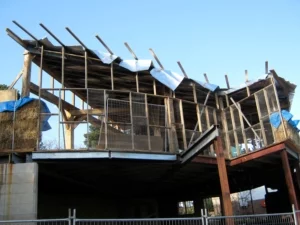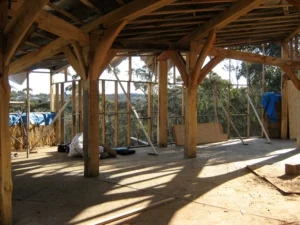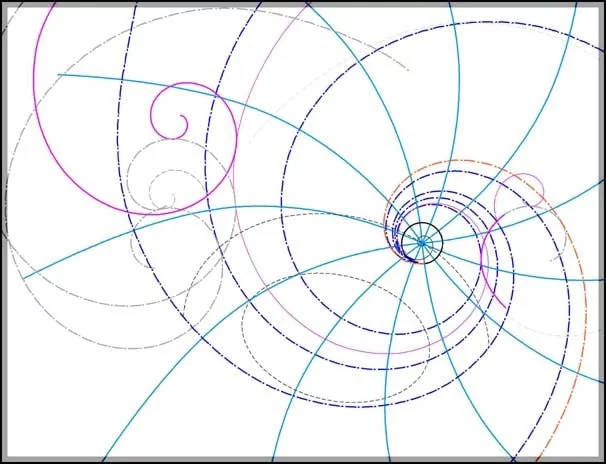As a writer, I have a professional sympathy with architects. At the outset of a project, we both face a blank page. Sure the clients and builders have ideas, but it is the architect’s task to reconcile these ideas with the financial, bureaucratic and physical constraints of the site and transform it into a coherent whole.
Simon Hearn of Sunlab Architecture did just this when he designed the spiral kindy and performance space. He was brought into the project by architect Jamie Brennan who had already chosen the site and scale of the new building, so it would imaginatively spiral into the old.
The teachers also saw a spiral resonate in the growth of a child. “The kindy children begin at warm centre of a small world”, explained John. “As they grow their world expands outwards until, as young adolescents, they spread their wings into the larger world.”
Simon, building on the groundwork laid by Jamie and the philosophical reflections of the teachers, decided to make the idea of the spiral more overt, bringing a physical dimension to this eternal principle of circularity and change.
Most designs demand logic and reason, but not the spiral shell. Simon recalls he approached the task intuitively and spent days experimenting with different ratios until he settled on one that begins tightly then splays out.
Simon felt that the sacred geometric proportions traditionally found in temples and other reflective places were not appropriate for a kindy and performing space, so opted for a looser, more relaxed organic “living spiral” based on shapes found in nature, such as shells or water forms. These arcs are not locked into cold equations but are in motion, becoming and changing through intricate and subtle variations. In Simon’s design, walls grow thinner, then thicker and the height of windows grow and shrink along the curve.
The building’s simple elegance belies the complicated, interlocking arcs and dimensions underlying it. On the spiral’s outer reaches, other arcs come into play that reverse the curvature of the flow (as illustrated in the sketch above). These tendrils will take the form of retaining walls and garden beds.
The structural core of the building marks the axis of the spiral. From here the spiral unfolds clockwise* from inside to outside, the helix traveling in two directions: the expansive upward and outward movement and the grounding inward and downwards. In building will resolve the outer spiral in a copper clad, extended peak.
An expressive form like a spiral is rare brief, and Simon considers this commission to be one of the most exciting projects he has undertaken. The carpenters, builders and window makers who now work from his designs, see the building as a blank canvas to express their artistry – a living example of circularity and change.
*Yes I know this runs contrary to some Steiner based theories but they were developed in the Northern-hemisphere literature, and the corealis effect tells us that a vortex is reversed on the southern side of the equator. Anyway it better suits the site.
Further Reading
Simon found inspiration in the architectural ideas of Hundertwasser, Theodore Schwenk, D’arcy Wentworth Thompson, who in the early 20th century, created designs based on the horns of animals and the thickness of bones. Follow these links to read more about this architectural tradition.
D’arcy Wentworth Thompson’s description of the ‘theory of transformations‘ which is a foundation of morphogenesis; organic geometry;
Hundertwasser was an influence in terms of ‘soft’ geometry and hand made architecture. His ‘Forest Spiral’ (Waldspirale) building will be a reference when we get to the decorative rendering stage.
Theodore Schwenk’s book ‘Sensitive Chaos’ is available on googlebooks
The building implies a 3D spiral form, as is seen in the central roof A spiral in 3 dimensions is called a concho-spiral

Kindlehill School is a K-10 Steiner School that sits on a hill above the Wentworth Falls Lake, in the Blue Mountains, NSW. We are an independant school working creatively and in a contemporary way, out of the foundation of Rudolf Steiner’s philosophy for education.





